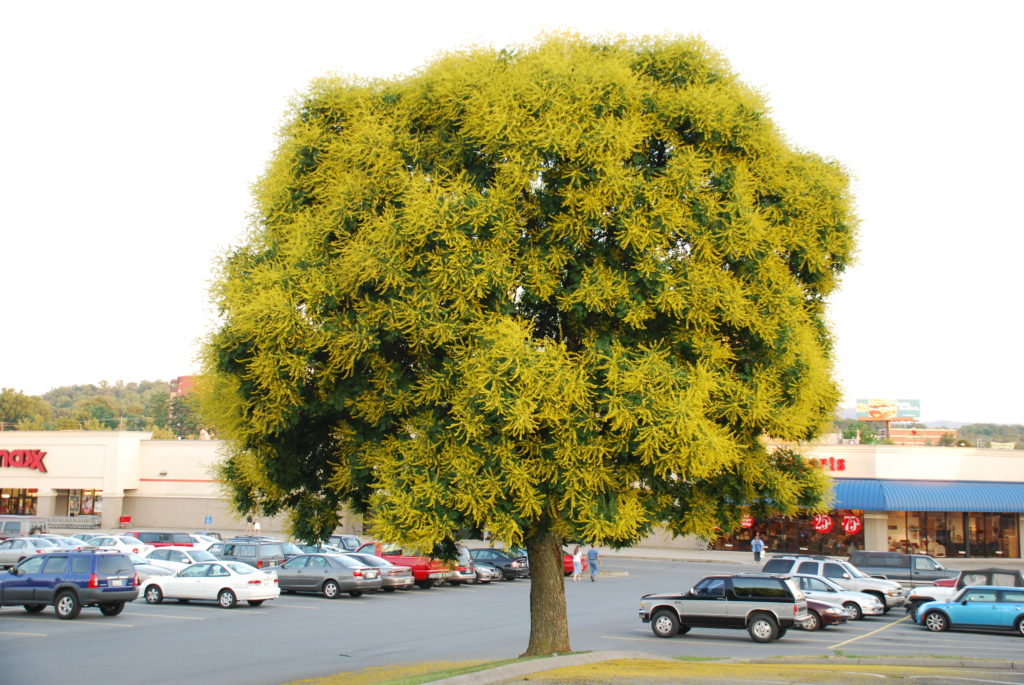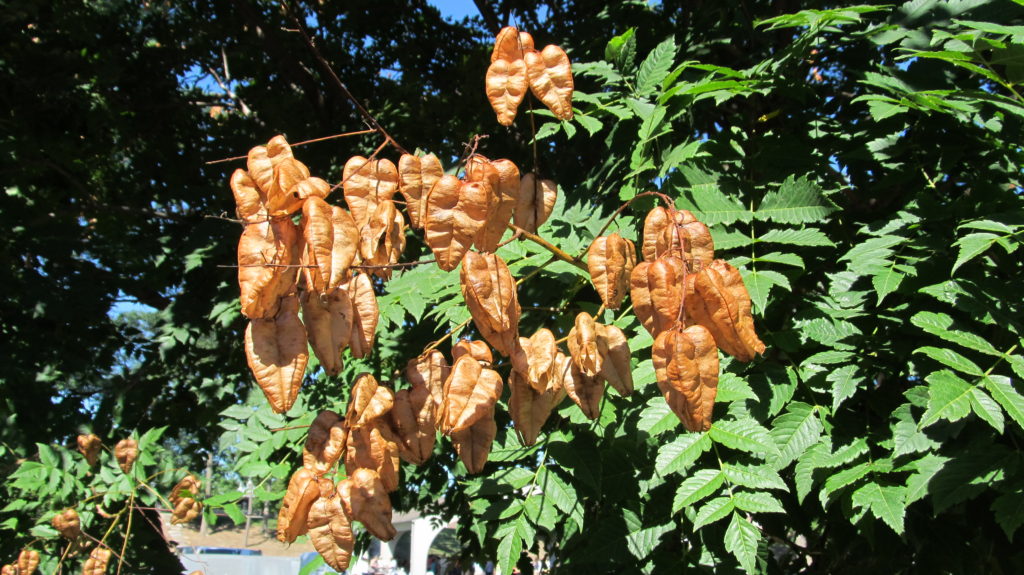
Golden raintree (Koelreuteria paniculata)is a medium sized deciduous tree that grows 30 to 45 feet tall and 25-35 feet wide, a horizontally branched tree Zones 5-9). This tree has a medium to fast growth rate, blooms at an early age with upright twigs with yellow flowers, a rare color among flowering trees whenever the time of year. The bright star-like flowers sparkle for almost two-weeks long in early July (Tennessee/Virginia).
The tightly closed papery fruits are highly decorative and often included in dried floral arrangements. Its papery lantern-like fruits contain viable seeds that dehisce (explode) from the husks in late autumn.
Golden raintree tolerates a range of soil types but prefers moist, well-drained soil that is neutral to slightly alkaline. Raintree transplants easy and prefers full sun. The wide spreading branched tree is commonly planted in lawns and patios or as park, shade or street trees.

Identification features: Leaves are pinnate or bipinnate, feathery, compound leaves (to 18″ long), each leaf having 7-17 irregularly deeply lobed leaflets. Leaves emerge pinkish bronze to purplish in spring, mature to a bright green in summer and turn yellow (quality variable) in fall. Bright yellow flowers (1/2″ wide) appear in early summer in long, terminal, panicles (12-15″). Falling blossoms from several raintrees may lay down an attractive golden carpet around the trees. Stems also have prominent, shield-shaped leaf scars.
This great summer flowering tree tolerates summer heat and drought as well as urban air pollution. It is mildly resistant to deer injury and is pest and disease free. Sometimes suffers from coral spot fungus, root rot, and cankers. Branches are rated as brittle wood and may be damaged in seasonal storms. Golden raintree reseeds easily and can become weedy; listed as an invasive species in some states.
Cultivars: ‘Fastigiata’ has a narrow upright habit, 30 feet tall and 6 feet wide framework. ‘September’ blooms later in August-September and is not rated as cold hardy as species.

 Posted in
Posted in 
